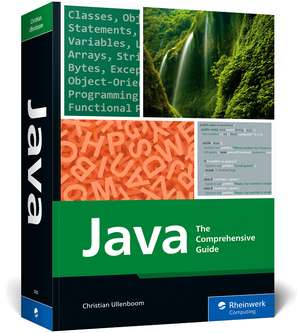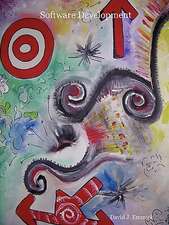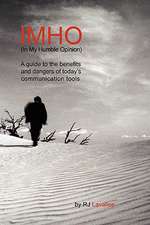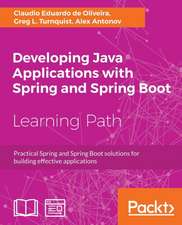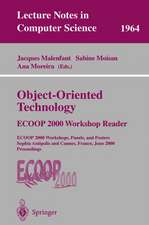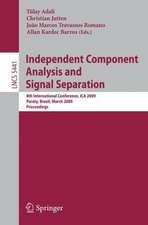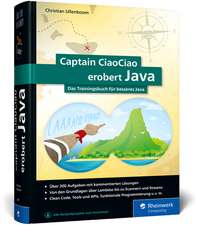Java: Rheinwerk Computing
Autor Christian Ullenboomen Limba Engleză Paperback – 10 mar 2023
Din seria Rheinwerk Computing
- 20%
 Preț: 240.36 lei
Preț: 240.36 lei -
 Preț: 146.67 lei
Preț: 146.67 lei - 20%
 Preț: 150.91 lei
Preț: 150.91 lei - 20%
 Preț: 314.37 lei
Preț: 314.37 lei - 20%
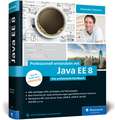 Preț: 438.21 lei
Preț: 438.21 lei - 20%
 Preț: 170.37 lei
Preț: 170.37 lei - 20%
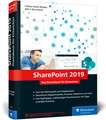 Preț: 429.87 lei
Preț: 429.87 lei - 20%
 Preț: 163.16 lei
Preț: 163.16 lei - 20%
 Preț: 505.07 lei
Preț: 505.07 lei - 20%
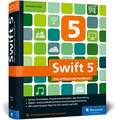 Preț: 405.03 lei
Preț: 405.03 lei - 20%
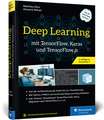 Preț: 248.28 lei
Preț: 248.28 lei - 20%
 Preț: 76.76 lei
Preț: 76.76 lei - 20%
 Preț: 160.70 lei
Preț: 160.70 lei - 20%
 Preț: 176.55 lei
Preț: 176.55 lei - 20%
 Preț: 164.12 lei
Preț: 164.12 lei - 20%
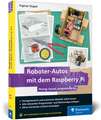 Preț: 180.45 lei
Preț: 180.45 lei -
 Preț: 206.10 lei
Preț: 206.10 lei - 20%
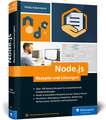 Preț: 328.07 lei
Preț: 328.07 lei - 20%
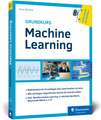 Preț: 168.75 lei
Preț: 168.75 lei - 20%
 Preț: 260.73 lei
Preț: 260.73 lei - 20%
 Preț: 241.56 lei
Preț: 241.56 lei - 20%
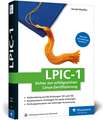 Preț: 225.08 lei
Preț: 225.08 lei - 20%
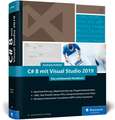 Preț: 400.38 lei
Preț: 400.38 lei - 20%
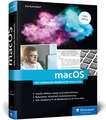 Preț: 331.74 lei
Preț: 331.74 lei - 20%
 Preț: 397.90 lei
Preț: 397.90 lei - 20%
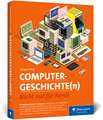 Preț: 162.74 lei
Preț: 162.74 lei -
 Preț: 211.66 lei
Preț: 211.66 lei - 20%
 Preț: 169.59 lei
Preț: 169.59 lei - 20%
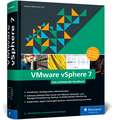 Preț: 602.18 lei
Preț: 602.18 lei - 20%
 Preț: 188.27 lei
Preț: 188.27 lei - 20%
 Preț: 319.45 lei
Preț: 319.45 lei - 20%
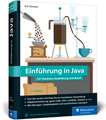 Preț: 276.22 lei
Preț: 276.22 lei - 20%
 Preț: 180.11 lei
Preț: 180.11 lei - 20%
 Preț: 142.44 lei
Preț: 142.44 lei - 20%
 Preț: 359.14 lei
Preț: 359.14 lei - 20%
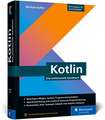 Preț: 345.68 lei
Preț: 345.68 lei - 20%
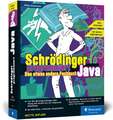 Preț: 351.27 lei
Preț: 351.27 lei - 20%
 Preț: 173.07 lei
Preț: 173.07 lei - 20%
 Preț: 394.49 lei
Preț: 394.49 lei - 20%
 Preț: 418.38 lei
Preț: 418.38 lei - 20%
 Preț: 256.64 lei
Preț: 256.64 lei - 20%
 Preț: 329.49 lei
Preț: 329.49 lei - 20%
 Preț: 251.77 lei
Preț: 251.77 lei - 20%
 Preț: 256.77 lei
Preț: 256.77 lei - 20%
 Preț: 187.26 lei
Preț: 187.26 lei - 20%
 Preț: 224.53 lei
Preț: 224.53 lei - 20%
 Preț: 287.89 lei
Preț: 287.89 lei - 20%
 Preț: 238.08 lei
Preț: 238.08 lei - 20%
 Preț: 152.60 lei
Preț: 152.60 lei - 20%
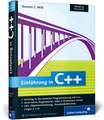 Preț: 176.62 lei
Preț: 176.62 lei
Preț: 340.77 lei
Preț vechi: 425.95 lei
-20% Nou
Puncte Express: 511
Preț estimativ în valută:
65.21€ • 70.81$ • 54.78£
65.21€ • 70.81$ • 54.78£
Carte disponibilă
Livrare economică 01-15 aprilie
Livrare express 18-22 martie pentru 166.30 lei
Preluare comenzi: 021 569.72.76
Specificații
ISBN-13: 9781493222957
ISBN-10: 1493222953
Pagini: 1126
Dimensiuni: 177 x 255 x 56 mm
Greutate: 1.91 kg
Editura: Rheinwerk Verlag GmbH
Seria Rheinwerk Computing
ISBN-10: 1493222953
Pagini: 1126
Dimensiuni: 177 x 255 x 56 mm
Greutate: 1.91 kg
Editura: Rheinwerk Verlag GmbH
Seria Rheinwerk Computing
Cuprins
... Preface ... 31
... Target Group ... 31
... What This Book Is Not ... 31
... My Life and Java, Or "Why a Java Book?" ... 32
... Software and Versions ... 33
... Which Java Version to Use ... 33
... Using This Book to Learn ... 33
... Personal Learning Strategies ... 34
... Focusing on the Essentials ... 35
... Special Sections ... 35
... Tasks ... 36
... Structure of This Book ... 36
... Conventions ... 38
... Program Listings ... 40
... Application Programming Interface Documentation in This Book ... 40
... Executable Programs ... 41
... Acknowledgments ... 41
... Resources for This Book ... 42
... Feedback ... 42
1 ... Introduction ... 43
1.1 ... Historical Background ... 43
1.2 ... On the Popularity of Java: The Key Features ... 45
1.3 ... Java versus Other Languages* ... 56
1.4 ... Further Development and Losses ... 59
1.5 ... Java Platforms ... 62
1.6 ... Java Platform, Standard Edition, Implementations ... 67
1.7 ... Installing the Java Development Kit ... 69
1.8 ... Compiling and Testing the First Program ... 71
1.9 ... Development Environments ... 75
1.10 ... Further Reading ... 81
2 ... Imperative Language Concepts ... 83
2.1 ... Elements of the Java Programming Language ... 83
2.2 ... From Classes to Statements ... 91
2.3 ... Data Types, Typing, Variables, and Assignments ... 102
2.4 ... Expressions, Operands, and Operators ... 119
2.5 ... Conditional Statements or Case Distinctions ... 142
2.6 ... Always the Same with Loops ... 160
2.7 ... Methods of a Class ... 177
2.8 ... Further Reading ... 200
3 ... Classes and Objects ... 201
3.1 ... Object-Oriented Programming ... 201
3.2 ... Members of a Class ... 203
3.3 ... Natural Modeling Using Unified Modeling Language* ... 204
3.4 ... Creating New Objects ... 206
3.5 ... ZZZZZnake ... 218
3.6 ... Tying Packages, Imports, and Compilation Units ... 220
3.7 ... Using References, Diversity, Identity, and Equality ... 228
3.8 ... Further Reading ... 239
4 ... Arrays and Their Areas of Use ... 241
4.1 ... Simple Field Work ... 241
4.2 ... The Extended for Loop ... 252
4.3 ... A Method with a Variable Number of Arguments ... 256
4.4 ... Multidimensional Arrays* ... 259
4.5 ... Library Support for Arrays ... 264
4.6 ... Using the Arrays Class for Comparing, Filling, Searching, and Sorting ... 267
4.7 ... The Entry Point for the Runtime System: main(...) ... 281
4.8 ... Further Reading ... 285
5 ... Handling Characters and Strings ... 287
5.1 ... From ASCII via ISO-8859-1 to Unicode ... 287
5.2 ... Data Types for Characters and Strings ... 295
5.3 ... The Character Class ... 296
5.4 ... Strings ... 301
5.5 ... The String Class and Its Methods ... 303
5.6 ... Mutable Strings with StringBuilder and StringBuffer ... 333
5.7 ... CharSequence as Base Type ... 342
5.8 ... Converting Primitives and Strings ... 345
5.9 ... Concatenating Strings ... 353
5.10 ... Decomposing Strings ... 355
5.11 ... Formatting Outputs ... 360
5.12 ... Further Reading ... 367
6 ... Writing Custom Classes ... 369
6.1 ... Declaring Custom Classes with Members ... 369
6.2 ... Privacy and Visibility ... 380
6.3 ... One for All: Static Methods and Class Variables ... 390
6.4 ... Constants and Enumerations ... 397
6.5 ... Creating and Destroying Objects ... 405
6.6 ... Class and Object Initialization* ... 418
6.7 ... Conclusion ... 426
7 ... Object-Oriented Relationship ... 427
7.1 ... Associations between Objects ... 427
7.2 ... Inheritance ... 436
7.3 ... Types in Hierarchies ... 447
7.4 ... Overriding Methods ... 457
7.5 ... Testing Dynamic Bindings ... 463
7.6 ... Final Classes and Final Methods ... 466
7.7 ... Abstract Classes and Abstract Methods ... 468
7.8 ... Further Information on Overriding and Dynamic Binding ... 476
7.9 ... A Programming Task ... 482
8 ... Interfaces, Enumerations, Sealed Classes, Records ... 483
8.1 ... Interfaces ... 483
8.2 ... Enumeration Types ... 513
8.3 ... Sealed Classes and Interfaces ... 523
8.4 ... Records ... 529
9 ... There Must Be Exceptions ... 539
9.1 ... Fencing In Problem Areas ... 539
9.2 ... Redirecting Exceptions and throws at the Head of Methods/Constructors ... 549
9.3 ... The Class Hierarchy of Exceptions ... 550
9.4 ... Final Handling Using finally ... 558
9.5 ... Triggering Custom Exceptions ... 564
9.6 ... try with Resources (Automatic Resource Management) ... 579
9.7 ... Special Features of Exception Handling* ... 588
9.8 ... Hard Errors: Error* ... 593
9.9 ... Assertions* ... 594
9.10 ... Conclusion ... 597
10 ... Nested Types ... 599
10.1 ... Nested Classes, Interfaces, and Enumerations ... 599
10.2 ... Static Nested Types ... 601
10.3 ... Non-Static Nested Types ... 603
10.4 ... Local Classes ... 605
10.5 ... Anonymous Inner Classes ... 607
10.6 ... Nests ... 613
10.7 ... Conclusion ... 614
11 ... Special Types of Java SE ... 615
11.1 ... Object Is the Mother of All Classes ... 616
11.2 ... Weak References and Cleaners ... 638
11.3 ... The java.util.Objects Utility Class ... 639
11.4 ... Comparing Objects and Establishing Order ... 643
11.5 ... Wrapper Classes and Autoboxing ... 651
11.6 ... Iterator, Iterable* ... 670
11.7 ... Annotations in Java Platform, Standard Edition ... 677
11.8 ... Further Reading ... 682
12 ... Generics ... 683
12.1 ... Introduction to Java Generics ... 683
12.2 ... Implementing Generics, Type Erasure, and Raw Types ... 699
12.3 ... Restricting Types via Bounds ... 706
12.4 ... Type Parameters in the throws Clause* ... 710
12.5 ... Inheritance and Invariance with Generics ... 713
12.6 ... Consequences of Type Erasure: Type Tokens, Arrays* ... 725
12.7 ... Further Reading ... 729
13 ... Lambda Expressions and Functional Programming ... 731
13.1 ... Functional Interfaces and Lambda Expressions ... 731
13.2 ... Method References ... 755
13.3 ... Constructor References ... 759
13.4 ... Functional Programming ... 762
13.5 ... Functional Interfaces from the java.util.function Package ... 770
13.6 ... Optional Is Not a Non-Starter ... 784
13.7 ... What Is So Functional Now? ... 795
13.8 ... Further Reading ... 797
14 ... Architecture, Design, and Applied Object Orientation ... 799
14.1 ... SOLID Modeling ... 799
14.2 ... Architecture, Design, and Implementation ... 803
14.3 ... Design Patterns ... 803
14.4 ... Further Reading ... 811
15 ... Java Platform Module System ... 813
15.1 ... Class Loader and Module/Classpath ... 813
15.2 ... Importing Modules ... 819
15.3 ... Developing Custom Modules ... 825
15.4 ... Further Reading ... 833
16 ... The Class Library ... 835
16.1 ... The Java Class Philosophy ... 835
16.2 ... Simple Time Measurement and Profiling* ... 842
16.3 ... The Class Class ... 843
16.4 ... The Utility Classes System and Members ... 846
16.5 ... The Languages of Different Countries ... 853
16.6 ... Overview of Important Date Classes ... 857
16.7 ... Date-Time API ... 860
16.8 ... Logging with Java ... 864
16.9 ... Maven: Resolving Build Management and Dependencies ... 867
16.10 ... Further Reading ... 869
17 ... Introduction to Concurrent Programming ... 871
17.1 ... Concurrency and Parallelism ... 871
17.2 ... Generating Existing Threads and New Threads ... 875
17.3 ... Thread Members and States ... 882
17.4 ... Enter the Executor ... 893
17.5 ... Further Reading ... 907
18 ... Introduction to Data Structures and Algorithms ... 909
18.1 ... Lists ... 909
18.2 ... Sets ... 928
18.3 ... Associative Memory ... 938
18.4 ... The Stream API ... 944
18.5 ... Creating a Stream ... 947
18.6 ... Terminal Operations ... 951
18.7 ... Intermediary Operations ... 962
18.8 ... Further Reading ... 968
19 ... Files and Data Streams ... 969
19.1 ... Old and New Worlds in java.io and java.nio ... 969
19.2 ... File Systems and Paths ... 970
19.3 ... Random Access Files ... 980
19.4 ... Base Classes for Input/Output ... 985
19.5 ... Reading from Files and Writing to Files ... 996
19.6 ... Further Reading ... 1003
20 ... Introduction to Database Management with JDBC ... 1005
20.1 ... Relational Databases and Java Access ... 1005
20.2 ... A Sample Query ... 1008
20.3 ... Further Reading ... 1009
21 ... Bits and Bytes, Mathematics and Money ... 1011
21.1 ... Bits and Bytes ... 1011
21.2 ... Floating Point Arithmetic in Java ... 1025
21.3 ... The Members of the Math Class ... 1031
21.4 ... Accuracy and the Value Range of Type and Overflow Control* ... 1042
21.5 ... Random Numbers: Random, ThreadLocalRandom, and SecureRandom ... 1046
21.6 ... Large Numbers* ... 1051
21.7 ... Money and Currency ... 1064
21.8 ... Further Reading ... 1066
22 ... Testing with JUnit ... 1067
22.1 ... Software Tests ... 1067
22.2 ... The JUnit Testing Framework ... 1068
22.3 ... Java Assertion Libraries and AssertJ ... 1081
22.4 ... Structure of Large Test Cases ... 1083
22.5 ... Good Design Enables Effective Testing ... 1085
22.6 ... Dummy, Fake, Stub, and Mock ... 1087
22.7 ... JUnit Extensions and Testing Add-Ons ... 1089
22.8 ... Further Reading ... 1089
23 ... The Tools of the JDK ... 1091
23.1 ... Overview ... 1091
23.2 ... Translating Java Sources ... 1092
23.3 ... The Java Runtime Environment ... 1093
23.4 ... Documentation Comments with Javadoc ... 1096
23.5 ... The JAR Archive Format ... 1105
23.6 ... Further Reading ... 1107
... The Author ... 1109
... Index ... 1111
... Target Group ... 31
... What This Book Is Not ... 31
... My Life and Java, Or "Why a Java Book?" ... 32
... Software and Versions ... 33
... Which Java Version to Use ... 33
... Using This Book to Learn ... 33
... Personal Learning Strategies ... 34
... Focusing on the Essentials ... 35
... Special Sections ... 35
... Tasks ... 36
... Structure of This Book ... 36
... Conventions ... 38
... Program Listings ... 40
... Application Programming Interface Documentation in This Book ... 40
... Executable Programs ... 41
... Acknowledgments ... 41
... Resources for This Book ... 42
... Feedback ... 42
1 ... Introduction ... 43
1.1 ... Historical Background ... 43
1.2 ... On the Popularity of Java: The Key Features ... 45
1.3 ... Java versus Other Languages* ... 56
1.4 ... Further Development and Losses ... 59
1.5 ... Java Platforms ... 62
1.6 ... Java Platform, Standard Edition, Implementations ... 67
1.7 ... Installing the Java Development Kit ... 69
1.8 ... Compiling and Testing the First Program ... 71
1.9 ... Development Environments ... 75
1.10 ... Further Reading ... 81
2 ... Imperative Language Concepts ... 83
2.1 ... Elements of the Java Programming Language ... 83
2.2 ... From Classes to Statements ... 91
2.3 ... Data Types, Typing, Variables, and Assignments ... 102
2.4 ... Expressions, Operands, and Operators ... 119
2.5 ... Conditional Statements or Case Distinctions ... 142
2.6 ... Always the Same with Loops ... 160
2.7 ... Methods of a Class ... 177
2.8 ... Further Reading ... 200
3 ... Classes and Objects ... 201
3.1 ... Object-Oriented Programming ... 201
3.2 ... Members of a Class ... 203
3.3 ... Natural Modeling Using Unified Modeling Language* ... 204
3.4 ... Creating New Objects ... 206
3.5 ... ZZZZZnake ... 218
3.6 ... Tying Packages, Imports, and Compilation Units ... 220
3.7 ... Using References, Diversity, Identity, and Equality ... 228
3.8 ... Further Reading ... 239
4 ... Arrays and Their Areas of Use ... 241
4.1 ... Simple Field Work ... 241
4.2 ... The Extended for Loop ... 252
4.3 ... A Method with a Variable Number of Arguments ... 256
4.4 ... Multidimensional Arrays* ... 259
4.5 ... Library Support for Arrays ... 264
4.6 ... Using the Arrays Class for Comparing, Filling, Searching, and Sorting ... 267
4.7 ... The Entry Point for the Runtime System: main(...) ... 281
4.8 ... Further Reading ... 285
5 ... Handling Characters and Strings ... 287
5.1 ... From ASCII via ISO-8859-1 to Unicode ... 287
5.2 ... Data Types for Characters and Strings ... 295
5.3 ... The Character Class ... 296
5.4 ... Strings ... 301
5.5 ... The String Class and Its Methods ... 303
5.6 ... Mutable Strings with StringBuilder and StringBuffer ... 333
5.7 ... CharSequence as Base Type ... 342
5.8 ... Converting Primitives and Strings ... 345
5.9 ... Concatenating Strings ... 353
5.10 ... Decomposing Strings ... 355
5.11 ... Formatting Outputs ... 360
5.12 ... Further Reading ... 367
6 ... Writing Custom Classes ... 369
6.1 ... Declaring Custom Classes with Members ... 369
6.2 ... Privacy and Visibility ... 380
6.3 ... One for All: Static Methods and Class Variables ... 390
6.4 ... Constants and Enumerations ... 397
6.5 ... Creating and Destroying Objects ... 405
6.6 ... Class and Object Initialization* ... 418
6.7 ... Conclusion ... 426
7 ... Object-Oriented Relationship ... 427
7.1 ... Associations between Objects ... 427
7.2 ... Inheritance ... 436
7.3 ... Types in Hierarchies ... 447
7.4 ... Overriding Methods ... 457
7.5 ... Testing Dynamic Bindings ... 463
7.6 ... Final Classes and Final Methods ... 466
7.7 ... Abstract Classes and Abstract Methods ... 468
7.8 ... Further Information on Overriding and Dynamic Binding ... 476
7.9 ... A Programming Task ... 482
8 ... Interfaces, Enumerations, Sealed Classes, Records ... 483
8.1 ... Interfaces ... 483
8.2 ... Enumeration Types ... 513
8.3 ... Sealed Classes and Interfaces ... 523
8.4 ... Records ... 529
9 ... There Must Be Exceptions ... 539
9.1 ... Fencing In Problem Areas ... 539
9.2 ... Redirecting Exceptions and throws at the Head of Methods/Constructors ... 549
9.3 ... The Class Hierarchy of Exceptions ... 550
9.4 ... Final Handling Using finally ... 558
9.5 ... Triggering Custom Exceptions ... 564
9.6 ... try with Resources (Automatic Resource Management) ... 579
9.7 ... Special Features of Exception Handling* ... 588
9.8 ... Hard Errors: Error* ... 593
9.9 ... Assertions* ... 594
9.10 ... Conclusion ... 597
10 ... Nested Types ... 599
10.1 ... Nested Classes, Interfaces, and Enumerations ... 599
10.2 ... Static Nested Types ... 601
10.3 ... Non-Static Nested Types ... 603
10.4 ... Local Classes ... 605
10.5 ... Anonymous Inner Classes ... 607
10.6 ... Nests ... 613
10.7 ... Conclusion ... 614
11 ... Special Types of Java SE ... 615
11.1 ... Object Is the Mother of All Classes ... 616
11.2 ... Weak References and Cleaners ... 638
11.3 ... The java.util.Objects Utility Class ... 639
11.4 ... Comparing Objects and Establishing Order ... 643
11.5 ... Wrapper Classes and Autoboxing ... 651
11.6 ... Iterator, Iterable* ... 670
11.7 ... Annotations in Java Platform, Standard Edition ... 677
11.8 ... Further Reading ... 682
12 ... Generics ... 683
12.1 ... Introduction to Java Generics ... 683
12.2 ... Implementing Generics, Type Erasure, and Raw Types ... 699
12.3 ... Restricting Types via Bounds ... 706
12.4 ... Type Parameters in the throws Clause* ... 710
12.5 ... Inheritance and Invariance with Generics ... 713
12.6 ... Consequences of Type Erasure: Type Tokens, Arrays* ... 725
12.7 ... Further Reading ... 729
13 ... Lambda Expressions and Functional Programming ... 731
13.1 ... Functional Interfaces and Lambda Expressions ... 731
13.2 ... Method References ... 755
13.3 ... Constructor References ... 759
13.4 ... Functional Programming ... 762
13.5 ... Functional Interfaces from the java.util.function Package ... 770
13.6 ... Optional Is Not a Non-Starter ... 784
13.7 ... What Is So Functional Now? ... 795
13.8 ... Further Reading ... 797
14 ... Architecture, Design, and Applied Object Orientation ... 799
14.1 ... SOLID Modeling ... 799
14.2 ... Architecture, Design, and Implementation ... 803
14.3 ... Design Patterns ... 803
14.4 ... Further Reading ... 811
15 ... Java Platform Module System ... 813
15.1 ... Class Loader and Module/Classpath ... 813
15.2 ... Importing Modules ... 819
15.3 ... Developing Custom Modules ... 825
15.4 ... Further Reading ... 833
16 ... The Class Library ... 835
16.1 ... The Java Class Philosophy ... 835
16.2 ... Simple Time Measurement and Profiling* ... 842
16.3 ... The Class Class ... 843
16.4 ... The Utility Classes System and Members ... 846
16.5 ... The Languages of Different Countries ... 853
16.6 ... Overview of Important Date Classes ... 857
16.7 ... Date-Time API ... 860
16.8 ... Logging with Java ... 864
16.9 ... Maven: Resolving Build Management and Dependencies ... 867
16.10 ... Further Reading ... 869
17 ... Introduction to Concurrent Programming ... 871
17.1 ... Concurrency and Parallelism ... 871
17.2 ... Generating Existing Threads and New Threads ... 875
17.3 ... Thread Members and States ... 882
17.4 ... Enter the Executor ... 893
17.5 ... Further Reading ... 907
18 ... Introduction to Data Structures and Algorithms ... 909
18.1 ... Lists ... 909
18.2 ... Sets ... 928
18.3 ... Associative Memory ... 938
18.4 ... The Stream API ... 944
18.5 ... Creating a Stream ... 947
18.6 ... Terminal Operations ... 951
18.7 ... Intermediary Operations ... 962
18.8 ... Further Reading ... 968
19 ... Files and Data Streams ... 969
19.1 ... Old and New Worlds in java.io and java.nio ... 969
19.2 ... File Systems and Paths ... 970
19.3 ... Random Access Files ... 980
19.4 ... Base Classes for Input/Output ... 985
19.5 ... Reading from Files and Writing to Files ... 996
19.6 ... Further Reading ... 1003
20 ... Introduction to Database Management with JDBC ... 1005
20.1 ... Relational Databases and Java Access ... 1005
20.2 ... A Sample Query ... 1008
20.3 ... Further Reading ... 1009
21 ... Bits and Bytes, Mathematics and Money ... 1011
21.1 ... Bits and Bytes ... 1011
21.2 ... Floating Point Arithmetic in Java ... 1025
21.3 ... The Members of the Math Class ... 1031
21.4 ... Accuracy and the Value Range of Type and Overflow Control* ... 1042
21.5 ... Random Numbers: Random, ThreadLocalRandom, and SecureRandom ... 1046
21.6 ... Large Numbers* ... 1051
21.7 ... Money and Currency ... 1064
21.8 ... Further Reading ... 1066
22 ... Testing with JUnit ... 1067
22.1 ... Software Tests ... 1067
22.2 ... The JUnit Testing Framework ... 1068
22.3 ... Java Assertion Libraries and AssertJ ... 1081
22.4 ... Structure of Large Test Cases ... 1083
22.5 ... Good Design Enables Effective Testing ... 1085
22.6 ... Dummy, Fake, Stub, and Mock ... 1087
22.7 ... JUnit Extensions and Testing Add-Ons ... 1089
22.8 ... Further Reading ... 1089
23 ... The Tools of the JDK ... 1091
23.1 ... Overview ... 1091
23.2 ... Translating Java Sources ... 1092
23.3 ... The Java Runtime Environment ... 1093
23.4 ... Documentation Comments with Javadoc ... 1096
23.5 ... The JAR Archive Format ... 1105
23.6 ... Further Reading ... 1107
... The Author ... 1109
... Index ... 1111
